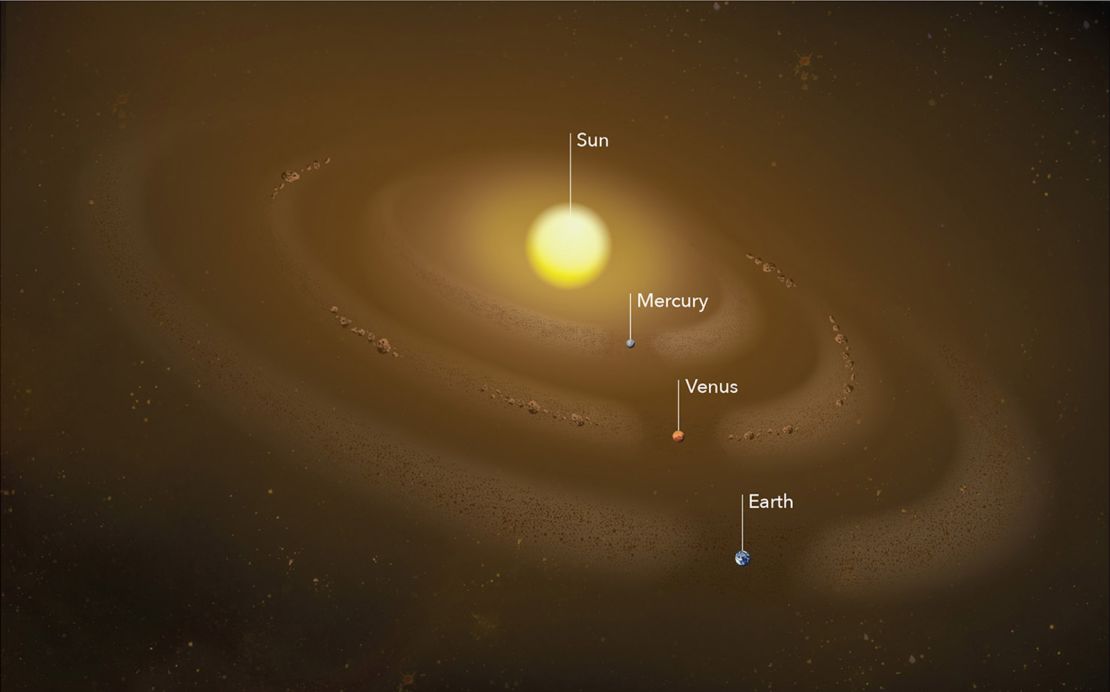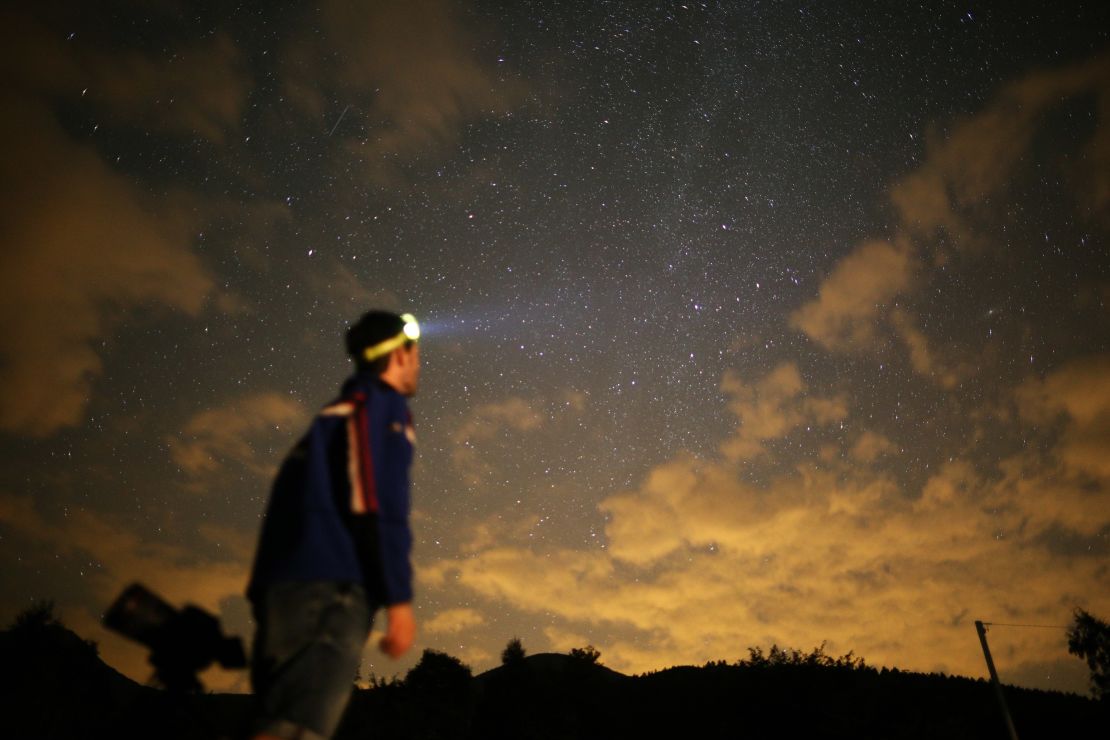Observing celestial sights could connect us during a time when we’re forced to be physically apart.
That was the idea of Megan Eaves, a writer and amateur astronomer who was scrolling through Twitter and reading users’ complaints about being stuck inside their homes.
The spread of the coronavirus has forced many countries to issue strict rules about social distancing.
As she scrolled, Eaves said, she had an epiphany: “I thought, ‘Well, if we’re all stuck here looking at Twitter, why not just go out and look at the stars together?”
On March 15, she started leading virtual stargazing sessions on Twitter – aptly given the hashtag “#Starentine” by Jen Rose Smith, a freelance writer who writes for CNN Travel.
“The idea to me is quite nice,” Eaves said.
“It’s just everybody sort of going out at, theoretically, the same time each night wherever they are and having a little look up at the sky. We all know that we’re all living under the same sky, which is really beautiful. I think it brings a sense of connection and hopefully can bring us together in a small way during this time of scary difficulties.”
How the #Starentine works
A few times a week, Eaves posts Twitter threads on stargazing or night sky topics focusing on a specific night sky object – such as a star, planet or constellation – that’s visible in the Northern Hemisphere that evening.
From her vantage point in England, she’ll share the times they’re visible, how to orient yourself so you can see them, where to look and other tips, sourcing her information from sighting opportunity websites including NASA, In the Sky and Time and Date.
The first stargazing session earlier in March focused on the planet Venus as an introduction to easily visible sights in the night sky.
“When people go out and look at the night sky, myself included, it can be overwhelming to be faced with a bunch of science,” Eaves said.
“I focused a little bit on sort of basic facts and information about Venus, about Venus’s size, why it’s so bright in the night sky and those sorts of things.”
Eaves also taught participants about the mythology and etymology of Venus. She ended the session with artwork and poetry inspired by the planet, including Van Gogh’s “Starry Night,” which obscurely features Venus as the evening star, and a William Blake poem. On Thursday, she discussed Sirius, the brightest star in the night sky.

Eaves also recommends mobile apps that geo-locate people based on their GPS coordinates and point them toward what’s above them, such as SkyView.
There’s something soothing about collectively stargazing while we’re far apart, Eaves said.
“Knowing that you’re sitting [and] looking at the same sky as someone else, even if you’re not there with them, there’s something almost quantum about that. It’s kind of a spiritual feeling, that you are having a shared experience even though you’re not next to each other or physically present with each other.”
“I suppose we’re all being forced right now to slow down, quiet down, stop moving and doing so much, and it is scary. But also, let’s try to be reminded that we’re in it together,” Eaves continued. “Maybe this can be a way of accessing that feeling for people.”
Other ways to observe the cosmos
Stargazing can be very meditative, Eaves said. “It has a similar effect on me as going to the beach or climbing a mountain. When you get to the top, and you kind of stand there and look, there’s a lot to see. You can trace the stars’ movement across the sky and you can see the stars rising and setting.”
“It does force you to just sit there, take a look, breathe and not do anything else. You kind of end up processing your emotions while you’re doing that, just by virtue of the fact that you’re sitting down without any other distractions.”
If you’re not into Twitter, there are other virtual ways to view wonders of the sky.
The Virtual Telescope Project, for example, offers tours of the cosmos and images of the sky in real-time to everyone in the world. They also have online observing sessions held by astrophysicists that are open to the public.

SkyView, NASA’s virtual telescope for the sky, enables space fanatics to explore the cosmos via images produced with radio waves, UV light or X-ray light. Online visitors can also submit a query for astronomers to capture a specific part of the sky they’re interested in seeing. Their Hubble Space Telescope webpage brings the latest images and videos from space.
The American Astronomical Society’s WorldWide Telescope allows visual navigation through astronomical, planetary and earth data.
Slooh, an online telescope network, has live feeds from 10 telescopes for 20 hours per day, from the vantage of the Flagship Canary Islands Observatory in Morocco to the Southern Hemisphere Observatory in Chile.
NASA’s Spot the Station tracker shows where the International Space Station is currently located in an orbit around the Earth and the path you can expect it to take over the next 90 minutes. The best time to spot it is either right before sunrise or right after sunset, when it’s dark enough to see the reflection of the station’s solar panels. You can set up phone notifications for when it’ll be visible in your area.
Stargazing and space and sky learning can also serve as another form of unifying entertainment when our usual options are coming up short.
“It’s a similar experience to when we maybe watch a big sporting event on TV and have that sense of excitement around the world. We can have a shared collective experience and know that we’re all looking up at the same night sky, that we’re not alone, that we’re not isolated. Even though we may be having to physically isolate in our houses right now, we’re actually not alone at all,” Eaves said.
“We’re all together on this little speck of rock in the grand, big universe.”
Megan Eaves and Jen Rose Smith have formerly written for CNN. CNN’S Brandon Killman contributed to this report.




